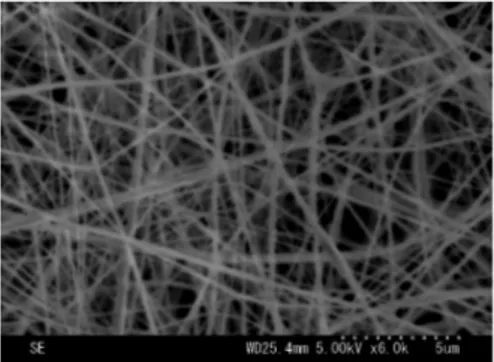Publisher’s version / Version de l'éditeur:
Proceedings of Annual Meeting of the Society of Polymer Science
READ THESE TERMS AND CONDITIONS CAREFULLY BEFORE USING THIS WEBSITE.
https://nrc-publications.canada.ca/eng/copyright
Vous avez des questions? Nous pouvons vous aider. Pour communiquer directement avec un auteur, consultez la première page de la revue dans laquelle son article a été publié afin de trouver ses coordonnées. Si vous n’arrivez pas à les repérer, communiquez avec nous à PublicationsArchive-ArchivesPublications@nrc-cnrc.gc.ca.
Questions? Contact the NRC Publications Archive team at
PublicationsArchive-ArchivesPublications@nrc-cnrc.gc.ca. If you wish to email the authors directly, please see the first page of the publication for their contact information.
NRC Publications Archive
Archives des publications du CNRC
This publication could be one of several versions: author’s original, accepted manuscript or the publisher’s version. / La version de cette publication peut être l’une des suivantes : la version prépublication de l’auteur, la version acceptée du manuscrit ou la version de l’éditeur.
Access and use of this website and the material on it are subject to the Terms and Conditions set forth at
Molecularly imprinted nanofiber membranes from modified polysulfone
bearing aldehyde moiety
Sueyoshi, Yuuki; Utsunomiya, Akira; Yoshikawa, Masakazu; Robertson,
Gilles P.; Guiver, Michael D.
https://publications-cnrc.canada.ca/fra/droits
L’accès à ce site Web et l’utilisation de son contenu sont assujettis aux conditions présentées dans le site LISEZ CES CONDITIONS ATTENTIVEMENT AVANT D’UTILISER CE SITE WEB.
NRC Publications Record / Notice d'Archives des publications de CNRC:
https://nrc-publications.canada.ca/eng/view/object/?id=91141fd3-6daf-475f-a9e9-7836f86657c2 https://publications-cnrc.canada.ca/fra/voir/objet/?id=91141fd3-6daf-475f-a9e9-7836f86657c2Molecularly imprinted nanofiber membranes from modified polysulfone bearing aldehyde
moiety
Yuuki Sueyoshi, Akira Utsunomiya, Masakazu Yoshikawa, Gilles P. Robertson, Michael D.
Guiver
Annual Meeting of the Society of Polymer Science, Osaka, Japan, May, 25
th– 27
th, 2011
NRCC No. 52893
Fig. 1 SEM image of Z-D-Glu molecularly imprinted nanofiber membrane.
アルデヒド含有ポリスルホンから誘導される分子インプリントナノファイバー膜
京工繊大院・生体分子工学 ○末吉優基・宇都宮朗・吉川正和
NRC Canada Gilles P. Robertson•Michael D. Guiver
<緒言> 分離膜の創成に簡易分子インプリント法を適用することにより、標的化合物を識別する分子認識 部位を容易に分離膜へ賦与することが可能となる。しかしながら、その透過流束は未だ充分ではない。膜分 離において、透過選択性と透過流束とは一般にトレードオフの関係にあり、この両者を同時に向上させるこ とは困難を極める。その解決法として、エレクトロスプレーデポジション法 (ESD 法) より創成されるナノフ ァイバー膜の膜形態が考えられる。この観点より、本研究では、簡易分子インプリント法と ESD 法とを同時 に適用することにより、新規な分子インプリントナノファイバー膜を創成し、その得られた分子インプリン トナノファイバー膜の分子認識能ならびに膜輸送能の検討を行なった。 <実験> 膜形成候補物質として、置換度 0.5 ならびに 1.0 のアルデヒド含有ポリスルホンを採用した。鋳 型分子として、N-α-ベンジルオキシカルボニル-D-グルタミン酸 (Z-D-Glu) ならびに N-α-ベンジルオキシカ ルボニル-L-グルタミン酸 (Z-L-Glu) を用いた。溶媒として DMF ならびに THF の混合溶媒を用い、鋳型比は 0.50 とした。エレクトロスプレーデポジションは、ES-2000(フューエンス)を用い、印加電圧 15-25 kV、 送液速度 3.00 mm3 min-1、針先内径 0.52 mm、針先̶ターゲット間距離 10 cm の条件にて作製した。 <結果と考察> 一例として、Fig. 1 に鋳型分子を抽出した後の 置換度 1.0 のD-鋳型膜の SEM 像を示す。ファイバー径は Image J で解析した結果、177 64 nm であった。モデルラセミ混合物と してD‒/L‒グルタミン酸 (D-/L-Glu) を採用し、濃度勾配を駆動力 とした膜輸送実験を行った。その結果、いずれの分子インプリン トナノファイバー膜においても透過選択性を与えた。さらに分子 インプリントナノファイバー膜の膜輸送速度は従来の分子インプ リント膜と比較して 2 桁高い値を示した。これらの結果は、分子 インプリントナノファイバー膜が新規な分離膜形態として有効で あることを示唆するものである。
Molecularly imprinted nanofiber membranes from modified polysulfone bearing aldehyde moiety
Yuuki SUEYOSHI1, Akira UTSUNOMIYA1, Masakazu YOSHIKAWA1, Gilles P. ROBERTSON2 , Michael D. GUIVER2 ( 1 Laboratory for Applied Polymer Chemistry, Department of Biomolecular Engineering, Kyoto Institute of Technology, Matsugasaki, Kyoto 606-8585, Japan 2 Institute for Chemical Process and Environmental Technology, National
Research Council of Canada, Ottawa, Ontario K1A 0R6, Canada ) Tel: +81-75-724-7803, Fax: +81-75-724-7800, E-mail: maku@kit.ac.jp
Key Word: Molecularly imprinting / Optical resolution / Chiral separation / Electrospray deposition / Membrane separation Abstract: It is of interest to directly convert polymeric materials into molecularly imprinted nanofiber membranes by
simultaneously applying an electrospray deposition and an alternative molecular imprinting. The membranes thus obtained was expected to show not only higher permselectivity but also higher flux value. To this end, molecularly imprinted nanofiber membranes were prepared from modified polysulfone bearing aldehyde moiety by adopting enantiomerically pure
N-α-benzyloxycarbonyl-D-glutamic acid (Z-D-Glu) or N-α-benzyloxycarbonyl-L-glutamic acid (Z-L-Glu) as a print molecule. The fiber diameters of the molecularly imprinted nanofiber membranes thus obtained were 177 ± 64 nm. Enantioselective transport was studied by using concentration difference or potential difference as a driving force for membrane transport. The results obtained in the present study suggested that molecularly imprinted nanofiber membranes enhanced both permselectivity and flux, which are generally perceived to show a trade-off relationship. The flux for the present molecularly imprinted nanofiber membranes were about two orders of magnitude higher than the usual molecularly imprinted membranes, while the molecularly imprinted nanofiber membranes also showed permselectivity.
